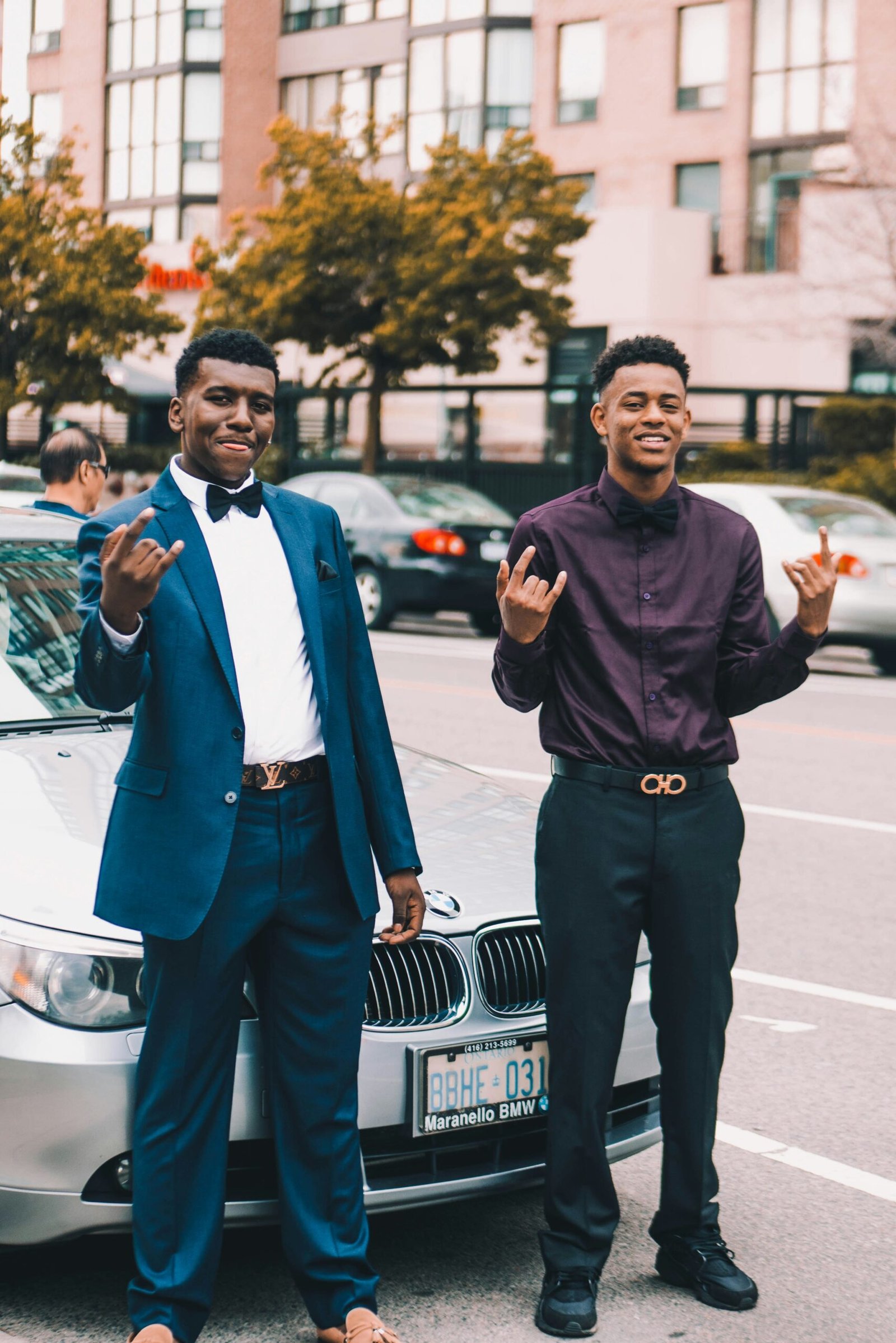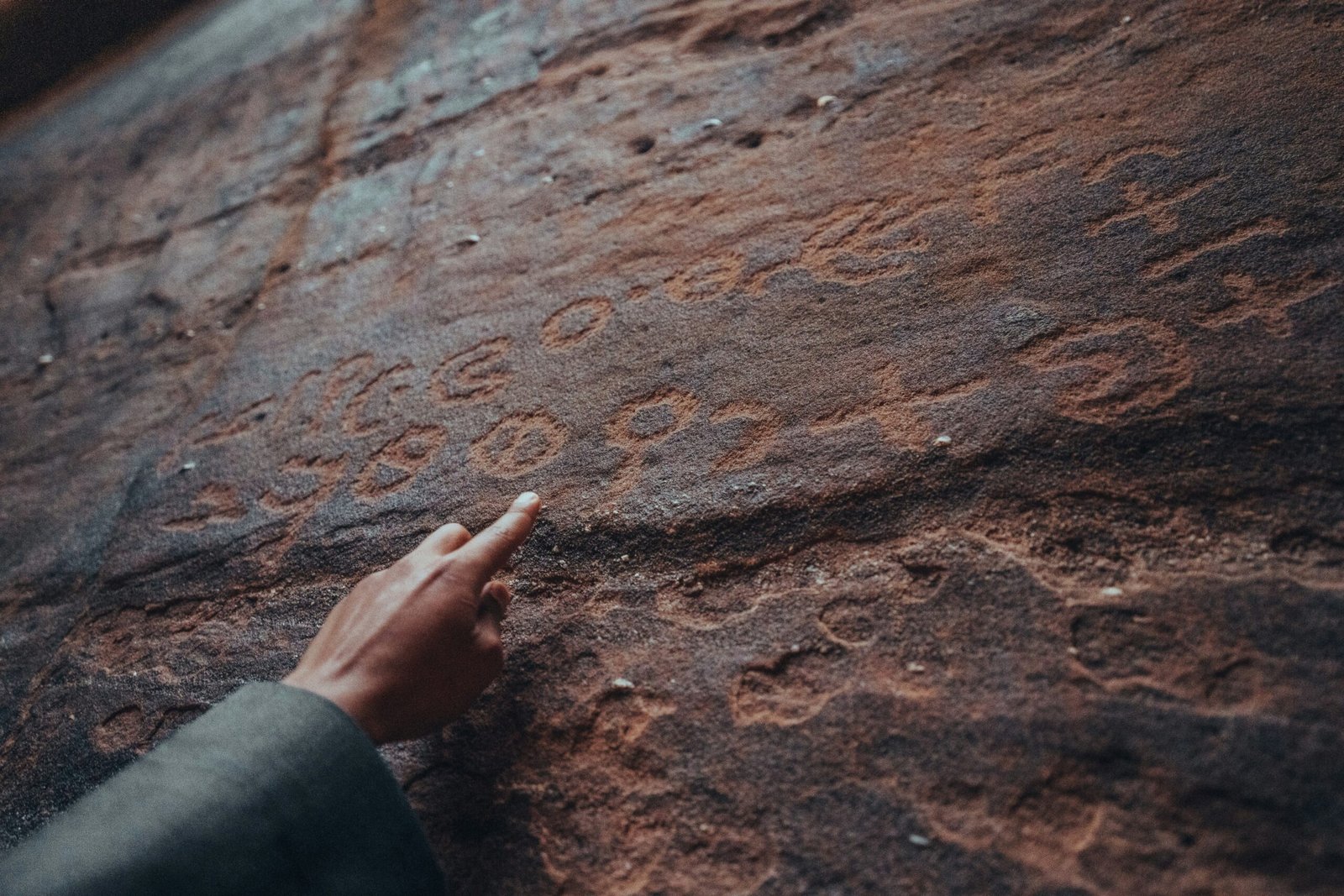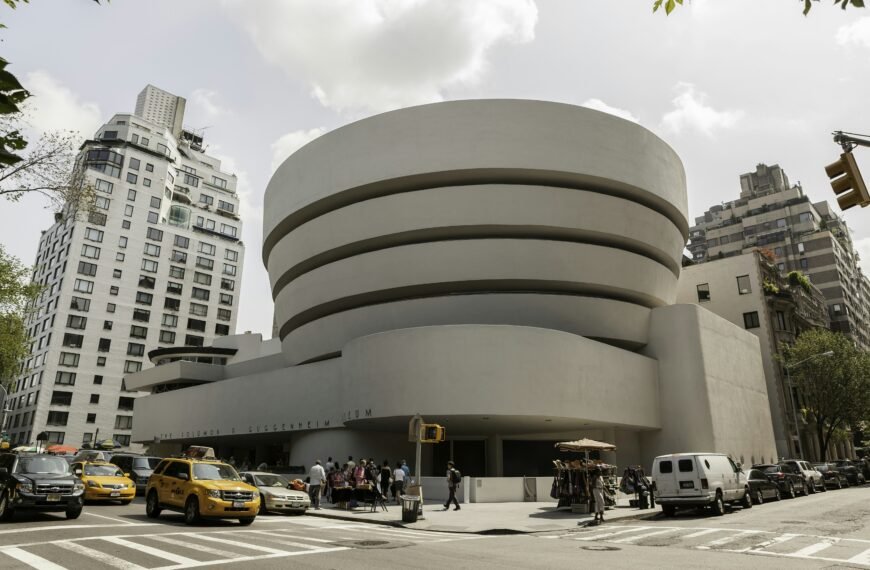In “Rediscovering the Harlem Renaissance at The Met,” the Metropolitan Museum of Art embarks on a second attempt to capture the spirit and significance of the Harlem Renaissance. The museum’s first exhibition on African American culture in 1969 was met with controversy and criticism, but now, more than 50 years later, they are back with a new showcase titled “The Harlem Renaissance and Transatlantic Modernism.” This time, the focus is on art, featuring over 160 stunning paintings, sculptures, and photographs. The exhibition not only aims to correct past mistakes but also hopes to shine a long-awaited spotlight on a neglected era of art history. From literature and music to visual art, the Harlem Renaissance was a cultural movement that transcended boundaries and united communities. The Met aims to do justice to this pivotal period by showcasing its rich artistic contributions and acknowledging its cultural solidarity.

History of the Harlem Renaissance
Emergence of the Harlem Renaissance
The Harlem Renaissance was a cultural and intellectual movement that emerged in the 1920s in Harlem, New York City. It was a time of significant social, artistic, and political transformation for African Americans. The vibrant neighborhood of Harlem became a center for creativity, attracting black artists, writers, musicians, and intellectuals from across the United States.
Key Figures and Influencers
Many important figures emerged during the Harlem Renaissance and made significant contributions to various fields. Some notable individuals include Langston Hughes, a renowned poet; Zora Neale Hurston, a celebrated author; Duke Ellington, a legendary jazz musician; and Jacob Lawrence, a prominent visual artist. These individuals, along with many others, shaped the artistic and intellectual landscape of the era and left a lasting impact on African American culture.
Impact and Legacy
The Harlem Renaissance had a profound impact on American culture and society. It challenged existing stereotypes and provided a platform for African American artists and intellectuals to express themselves freely. The movement paved the way for future generations of black artists and inspired the Civil Rights Movement of the 1950s and 1960s. Today, the legacy of the Harlem Renaissance can still be seen and felt in the continued celebration and appreciation of black art, music, and literature.
The Met’s First Exhibition on African American Culture
Overview of the Exhibition
In 1969, the Metropolitan Museum of Art (The Met) organized its first exhibition dedicated to African American culture. However, the exhibition, titled “Harlem on My Mind: Cultural Capital of Black America, 1900—1968,” was met with controversy and backlash. It primarily consisted of a photomural-with-texts presentation, which many critics felt did not adequately represent the rich artistic contributions of African Americans.
Controversies and Backlash
The exhibition received significant criticism from artists, activists, and the general public, as it perpetuated stereotypes and failed to showcase the artistic achievements of African Americans. Many felt that the museum missed an opportunity to highlight the vibrant and diverse culture of Harlem and instead presented a narrow and limited depiction of African American history and identity.
Protest and Demands for Inclusion
In response to the exhibition, the Black Emergency Cultural Coalition, a group of Black contemporary artists, organized protests and picketed the museum. Their activism and demands for inclusion laid the groundwork for future movements that aimed to challenge the exclusion of Black artists and voices in mainstream art institutions. The protests ignited a dialogue about representation and the importance of accurately reflecting the contributions of marginalized communities in art exhibitions.

The Harlem Renaissance and Transatlantic Modernism Exhibition
Introduction to the Exhibition
The Met’s second survey of Black art, “The Harlem Renaissance and Transatlantic Modernism,” seeks to rectify the shortcomings of its previous exhibition. This comprehensive exhibition features over 160 paintings, sculptures, and photographs that showcase the artistic achievements of Black artists during the Harlem Renaissance and their connections to the wider movement of Transatlantic Modernism.
Focus on Art and Artists
Unlike the previous exhibition, “The Harlem Renaissance and Transatlantic Modernism” primarily focuses on art, allowing museum visitors to experience the diversity and richness of the artistic expressions during the Harlem Renaissance. The exhibition includes works by both well-known and lesser-known artists, highlighting their individual styles and contributions to the cultural movement.
Expanding the Narrative of the Harlem Renaissance
This exhibition aims to expand the narrative of the Harlem Renaissance beyond the confines of Harlem itself. It recognizes that the movement was not limited to a specific geographic location but had a far-reaching impact on Black artists and intellectuals across the United States and even internationally. The exhibition explores the connections between Black artists in Harlem and their counterparts in other cities, such as Chicago and Paris, showcasing the global influence of the Harlem Renaissance.
The Importance of Art in the Harlem Renaissance
Literature and Music as the Foundation
While the Harlem Renaissance is often associated with visual art, it was primarily driven by advancements in literature and music. Writers like Langston Hughes and Zora Neale Hurston, along with musicians like Duke Ellington and Louis Armstrong, played a crucial role in shaping the movement. Their works were instrumental in expressing the unique experiences and perspectives of African Americans during this transformative era.
Visual Art as an Expression of Identity
Visual art also played a significant role in the Harlem Renaissance, serving as a powerful means of self-expression and a tool for reclaiming and asserting Black identity. Artists like Jacob Lawrence, Augusta Savage, and Aaron Douglas created powerful and iconic works that celebrated African American history, culture, and achievements. Their art challenged prevailing stereotypes and provided a visual representation of the complexity and diversity of Black experiences.
Exploration of Black Culture and Identity
The art of the Harlem Renaissance often explored themes of Black culture, identity, and the African diaspora. Artists sought to represent the beauty, strength, and resilience of the African American community, while also addressing the social and political challenges they faced. Through their artwork, they celebrated African traditions, highlighted the contributions of Black individuals throughout history, and advocated for racial equality and social justice.

Artists and Artworks in the Exhibition
Prominent Artists of the Harlem Renaissance
“The Harlem Renaissance and Transatlantic Modernism” features works by many prominent artists of the era, including Aaron Douglas, Jacob Lawrence, William H. Johnson, Augusta Savage, and Romare Bearden, among others. These artists were instrumental in shaping the visual aesthetic of the Harlem Renaissance and left a lasting impact on the art world.
Notable Artworks in the Exhibition
The exhibition showcases a wide range of artworks that demonstrate the diversity and complexity of the Harlem Renaissance. Notable pieces include Jacob Lawrence’s “Migration Series,” Aaron Douglas’s “Aspects of Negro Life,” Augusta Savage’s “The Harp,” and William H. Johnson’s “Street Life, Harlem.” These artworks encapsulate the spirit of the Harlem Renaissance and reflect the diverse themes and styles explored by the artists of the movement.
Themes and Motifs in the Artworks
The art of the Harlem Renaissance often depicted themes such as racial pride, cultural heritage, social inequality, and the African diaspora. Artists incorporated symbols, motifs, and visual elements that represented these themes. For example, Aaron Douglas frequently used geometric shapes and stylized figures in his artwork to express the strength and resilience of the African American community. Jacob Lawrence’s “Migration Series” depicted the Great Migration and the challenges faced by Black individuals as they moved from the rural South to northern cities.
Celebrating Cultural Solidarity
Exchanges between American, European, and African Artists
The Harlem Renaissance was not limited to the United States; it had a significant impact on the global art scene. The movement facilitated cultural exchanges between American, European, and African artists, leading to a rich and diverse artistic dialogue. Black artists from Harlem traveled to Europe, where they engaged with European modernist movements and established connections with artists from around the world.
Influence of Transatlantic Modernism
Transatlantic Modernism, which encompassed various artistic movements in Europe, played a crucial role in shaping the artistic landscape of the Harlem Renaissance. Artists like Augusta Savage and Palmer Hayden drew inspiration from European modernist techniques and incorporated them into their artwork. The exhibition highlights the cross-cultural exchanges and influences that helped shape the Harlem Renaissance and its connections to the wider modernist movement.
Breaking Barriers and Challenging Stereotypes
The Harlem Renaissance and the exchanges between American, European, and African artists broke down barriers and challenged prevailing stereotypes about Black art and culture. The movement created a sense of cultural solidarity among artists from diverse backgrounds and led to the recognition and celebration of the artistic contributions of African Americans on a global scale. It provided a platform for Black artists to assert their identity and challenge societal norms and prejudices.
Challenges and Controversies in Presenting the Harlem Renaissance
Navigating Complexities of Representation
Presenting the Harlem Renaissance in an exhibition format comes with its own set of challenges, particularly regarding representation and inclusivity. Curators must navigate the complexities of showcasing a diverse range of artists, styles, and themes without reinforcing stereotypes or overlooking lesser-known artists. It is essential to present a nuanced and comprehensive narrative that reflects the true diversity and complexity of the Harlem Renaissance.
Addressing Past Criticisms and Missteps
The Met’s previous exhibition on African American culture faced significant criticism for its inadequate representation of Black artists and its perpetuation of stereotypes. The current exhibition offers an opportunity to address these past missteps and engage in a more inclusive and accurate representation of the Harlem Renaissance. It is crucial for museums to acknowledge their past shortcomings and actively work towards rectifying them.
Creating Inclusive and Accessible Exhibitions
In creating exhibitions on the Harlem Renaissance, museums must prioritize inclusivity and accessibility. It is essential to involve diverse voices, including artists, scholars, and community members, in the curatorial process. Exhibitions should also be accessible to a wide range of audiences, both in terms of physical accessibility and the inclusion of educational resources that provide historical context and engage visitors in meaningful ways.
Public Response to the Exhibition
Initial Reactions and Reviews
The public response to the exhibition “The Harlem Renaissance and Transatlantic Modernism” is anticipated with great interest. Given the historical significance and cultural impact of the Harlem Renaissance, it is expected that the exhibition will generate widespread attention and critical acclaim. Reviews from art critics, scholars, and the general public will provide valuable insight into the success of the exhibition in accurately representing the contributions of Black artists during this era.
Impact on Art Institutions and Curatorial Practices
The exhibition has the potential to have a lasting impact on art institutions and curatorial practices. By presenting a comprehensive and inclusive exhibition on the Harlem Renaissance, The Met sets a precedent for other museums to follow. It encourages art institutions to reevaluate their own exhibitions and collection practices, ensuring that the contributions of marginalized communities are properly represented and celebrated.
Engagement and Education Outreach
In addition to the public response, the exhibition’s impact can be measured through engagement and education outreach initiatives. It offers an opportunity for museums to engage with local communities and provide educational resources that explore the complexities and significance of the Harlem Renaissance. By fostering dialogue and offering accessible educational programming, museums can contribute to a greater understanding and appreciation of Black art and history.
Revisiting the Significance of the Harlem Renaissance
Reevaluating Artistic Contributions
With the exhibition “The Harlem Renaissance and Transatlantic Modernism,” there is an opportunity to reevaluate and reassess the artistic contributions of the Harlem Renaissance. The exhibition provides a platform to showcase lesser-known artists, challenge existing narratives, and highlight the diversity and complexity of the movement. It invites viewers to engage critically with the artwork and consider the historical and cultural significance of the Harlem Renaissance.
Reclaiming and Amplifying Black Voices
One of the key objectives of revisiting the Harlem Renaissance is to reclaim and amplify Black voices that have been historically marginalized or overlooked. The exhibition allows for a meaningful exploration of Black art and history, providing a platform for Black artists to have their contributions recognized and celebrated. It encourages a deeper understanding and appreciation of the cultural and artistic achievements of African Americans during this transformative period.
Inspiration for Contemporary Art and Activism
The Harlem Renaissance continues to inspire contemporary art and activism. The exhibition serves as a source of inspiration for artists, activists, and scholars who seek to draw connections between the past and the present. By revisiting the Harlem Renaissance, we can gain valuable insights into the struggles and triumphs of the artists of that era and apply those lessons to ongoing efforts towards equality and social justice.
Future Directions for Exhibiting and Preserving Black Art
Continuing the Dialogue on Representation
The exhibition on the Harlem Renaissance paves the way for future conversations and exhibitions that focus on the representation of Black art and culture. Museums and art institutions should continue the dialogue on representation, actively seeking diverse perspectives and engaging in conversations about inclusivity, equity, and access. By doing so, they can contribute to a greater understanding and appreciation of Black art and culture.
Expanding Collection and Curation Practices
To fully represent and preserve Black art, museums and art institutions should expand their collection and curation practices. This includes actively acquiring and showcasing artworks by Black artists, both historical and contemporary. It is essential to recognize the evolving nature of art and ensure that diverse voices and perspectives are included in the narrative.
Supporting and Nurturing Black Artists
In addition to exhibitions, museums and art institutions should also focus on supporting and nurturing Black artists. This can be done through artist residencies, grants, mentorship programs, and educational initiatives. By investing in the development and promotion of Black artists, institutions can contribute to a more inclusive and equitable art world.
In conclusion, the exhibition “The Harlem Renaissance and Transatlantic Modernism” at The Met represents a significant step towards accurately representing and celebrating the contributions of Black artists during the Harlem Renaissance. It offers a comprehensive and inclusive portrayal of the movement, showcasing a wide range of artworks and exploring the connections between Black artists in Harlem and their counterparts across the globe. While challenges and controversies remain in presenting and preserving Black art, this exhibition serves as a catalyst for ongoing dialogue and action towards a more inclusive and representative art world.







